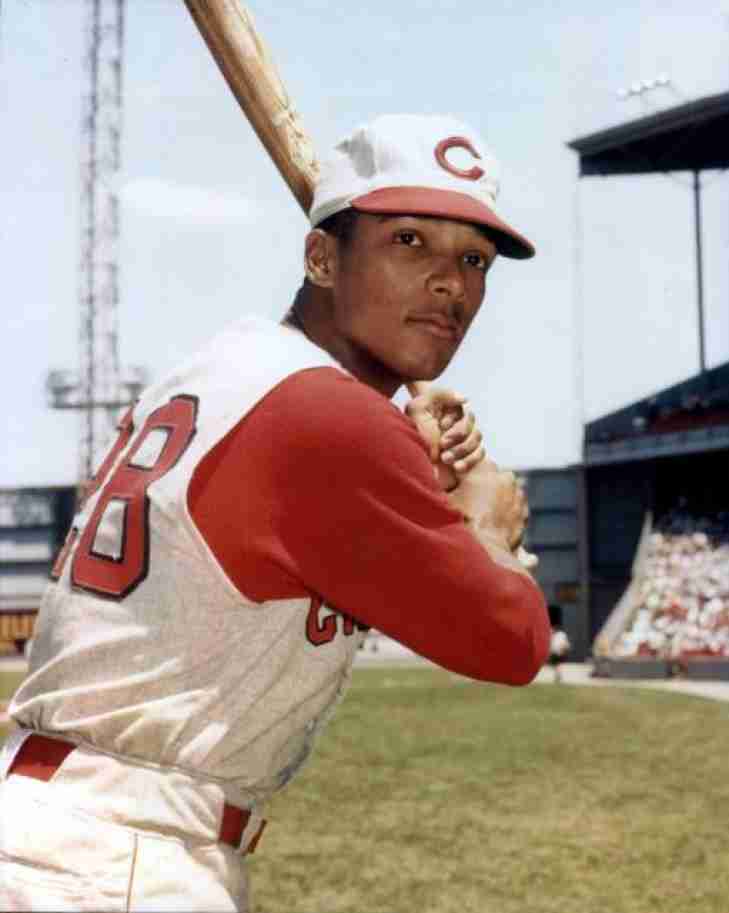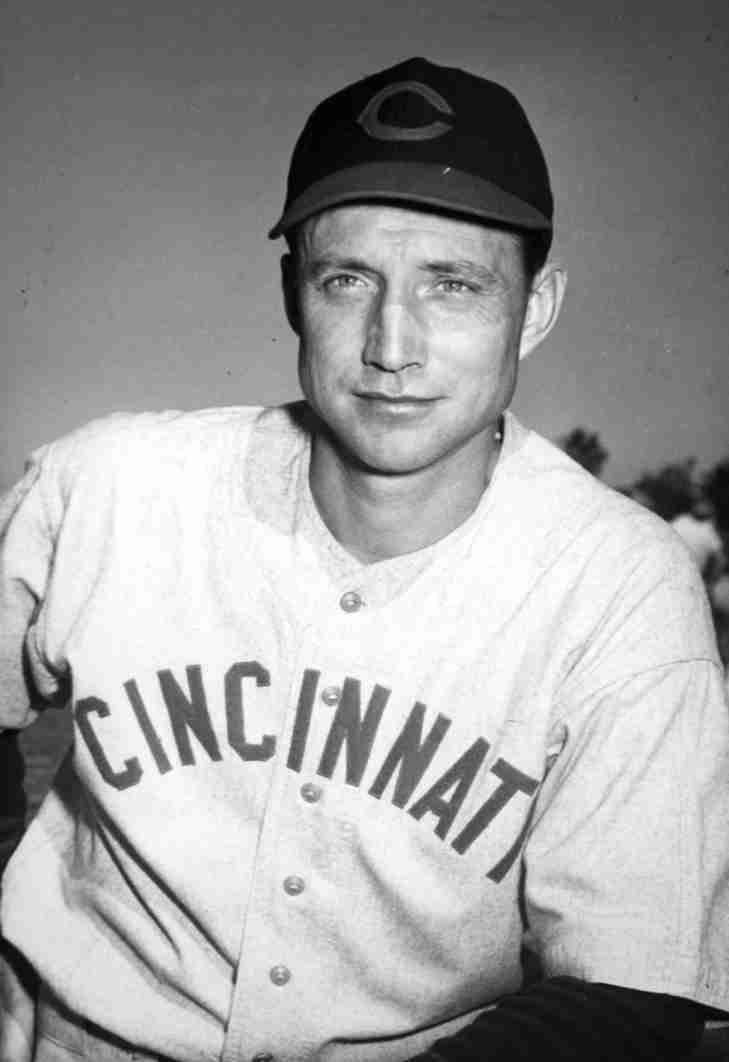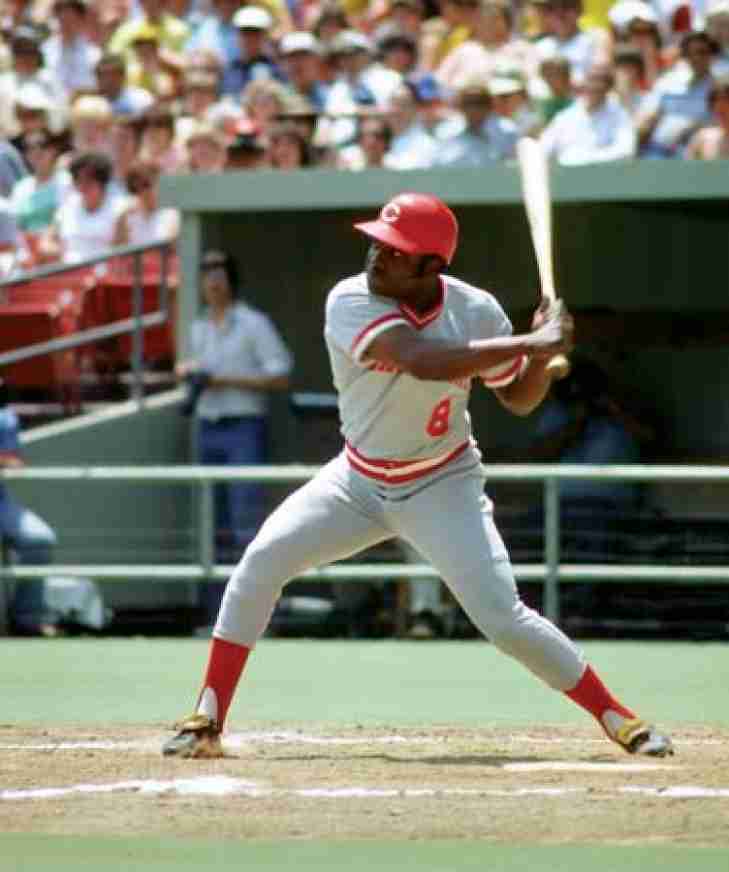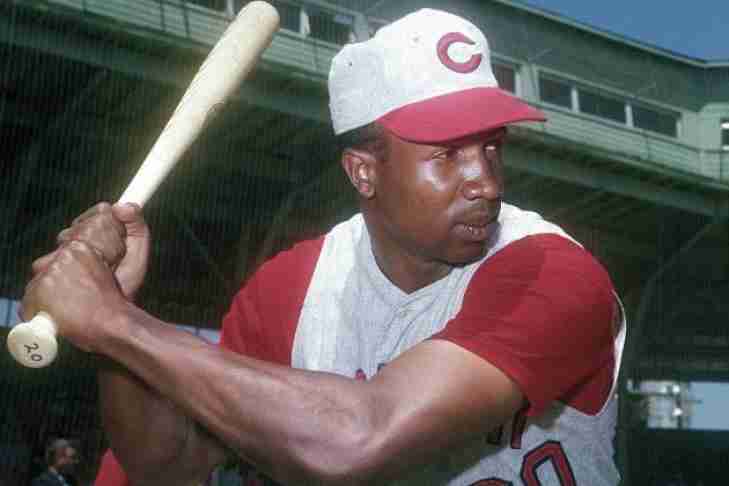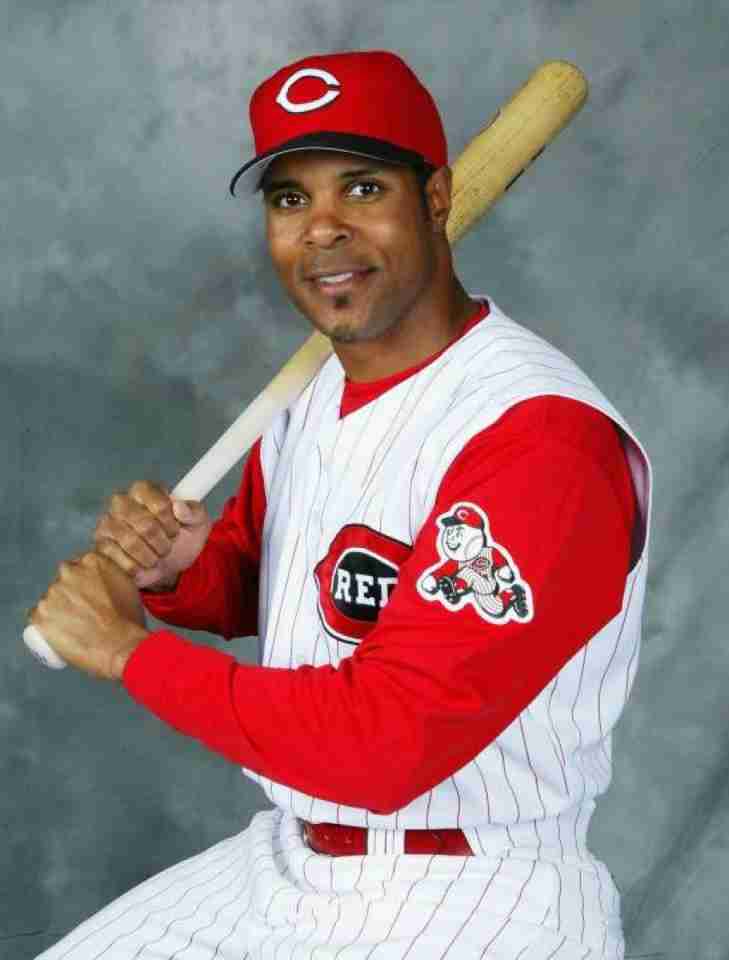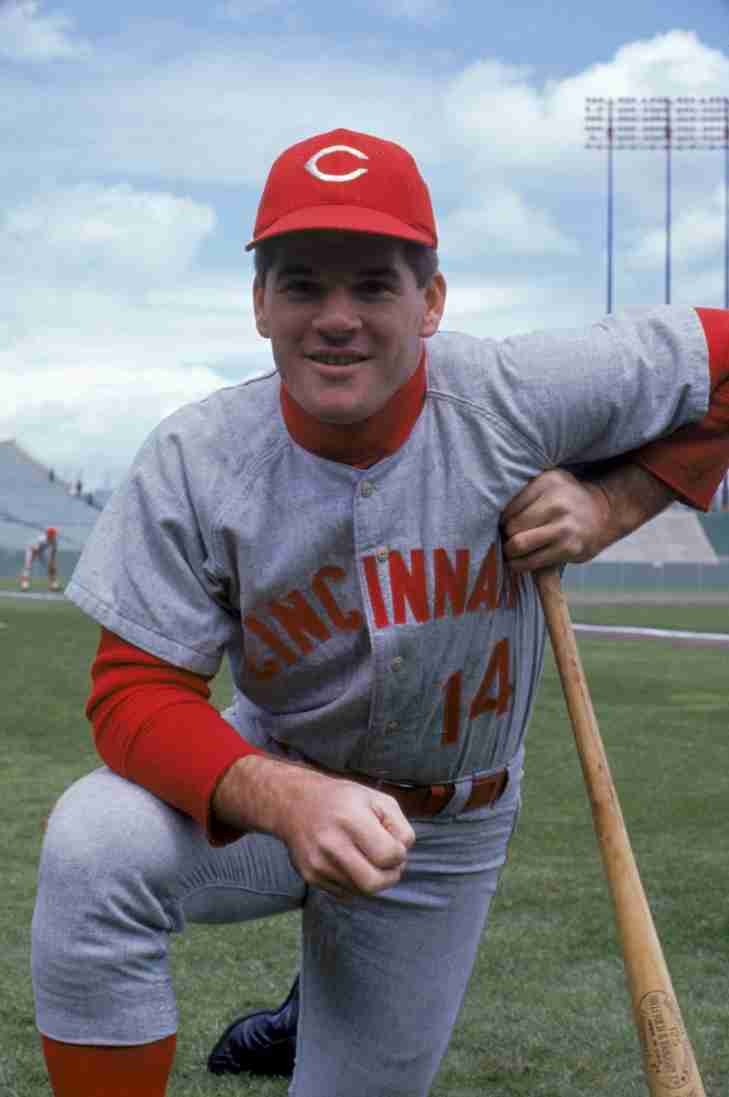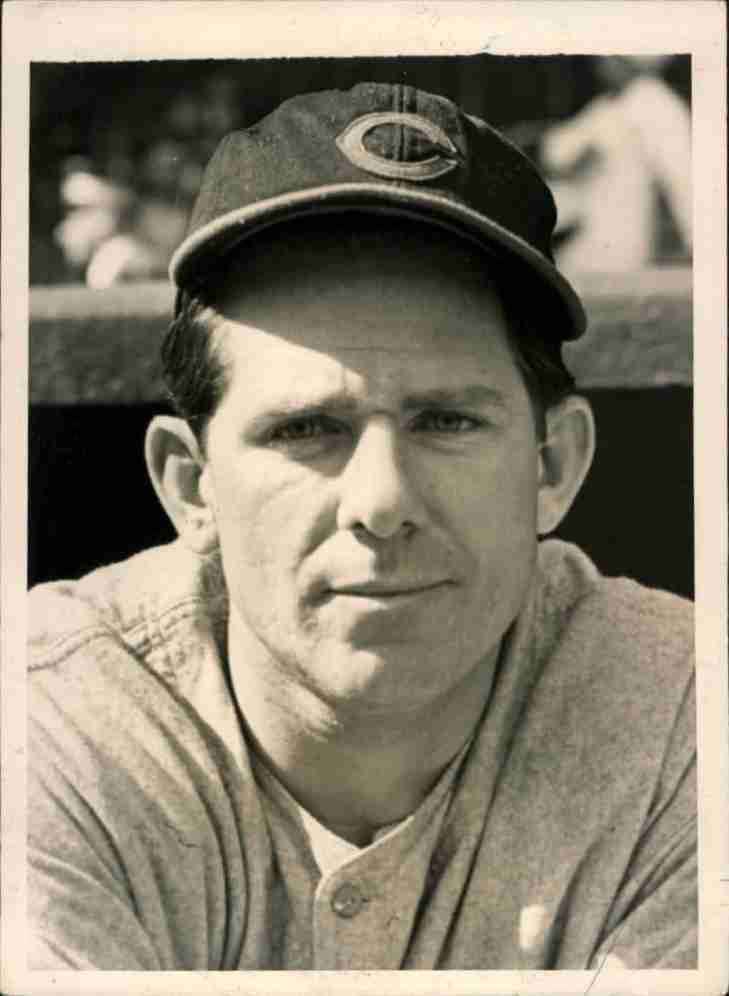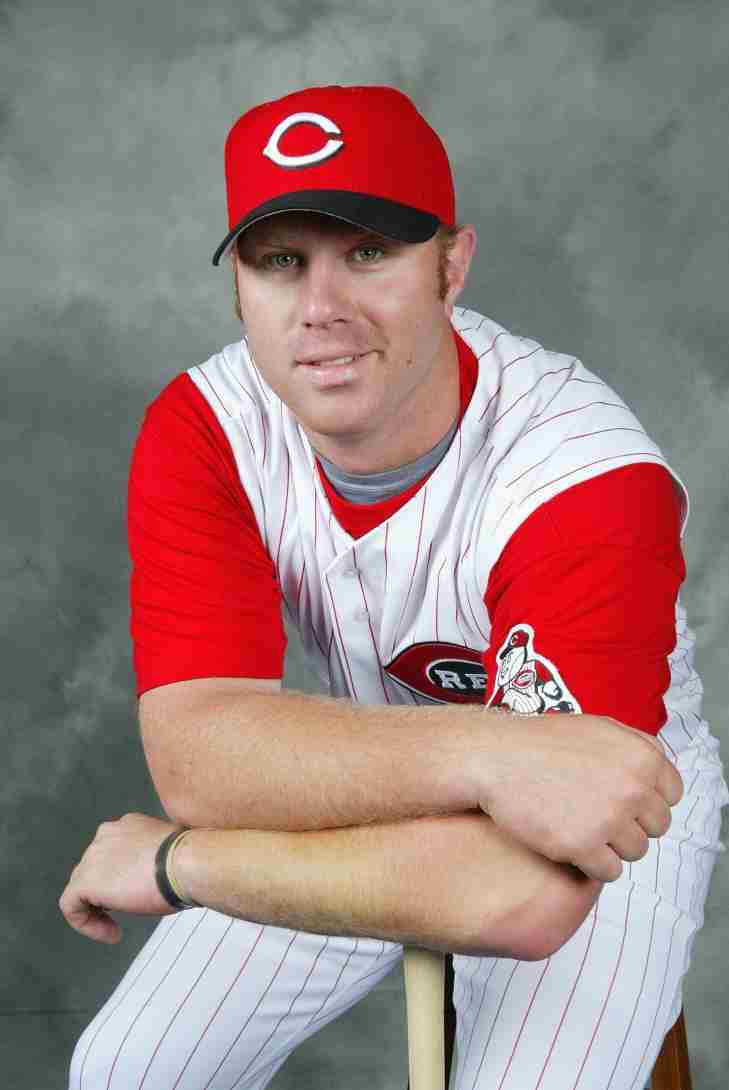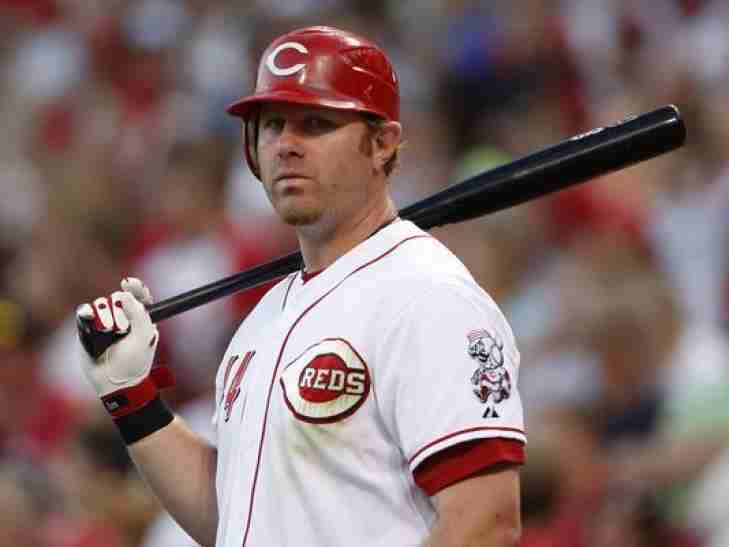10. Vada Pinson
7. Bucky Walters
6. Joe Morgan
3. Frank Robinson
2. Johnny Bench
The Cincinnati Reds Catcher was not just one of the best offensive players at his position ever, but he also backed that up with stellar defense and a cerebral way to call his staff.
13. Dolf Luque
12. George Foster
11. Noodles Hahn
He also has one of the best nicknames in franchise history.
4. Barry Larkin
1. Pete Rose
We all know that Pete Rose is banned from baseball, but the Cincinnati Reds recently placed him in their franchise Hall of Fame, as they should…he was the greatest player in team history.
18. Paul Derringer
5. Joey Votto
While most people know that he is good, they might not be aware this is a player who won the National League On Base Percentage Title seven times (including four in a row from 2010 to 2014, batted over .300 eight times, and is also a former Slugging Champion. With that last accolade, the Canadian clearly has power as he has well over 300 Home Runs, and 2,000 Hits in a career that was only been spent in Cincinnati.
Adam Dunn to the Cincinnati Reds HOF
A second round draft pick in 1998, Dunn would make the main roster in 2001 and would become quickly known for his tape measure Home Runs. A Red for eight seasons (2001 & 2008) Dunn had five consecutive 40 Home Run years (though the last was split with Arizona) and he would go yard 270 times with Cincinnati.
While Dunn would have some detractors for his low Batting Average, high Strikeout ratio and poor defense, he did have an excellent On Base Percentage (.380) and Slugging Percentage (.520) as a Red. The Reds never had a winning season while Dunn played there but his power displays certainly gave a lot of fans to cheer for.
Dunn beat out Aaron Boone, Danny Graves, Reggie Sanders, John Franco and Scott Rolen who were also nominated. It is possible that the Cincinnati Reds Hall of Fame Veteran’s Committee will announce other inductees to join Dunn.
We here at Notinhalloffame.com would like to congratulate Adam Dunn for achieving this prestigious honor.
The Cincinnati Reds HOF announce their Modern Era Finalists
Once that is complete, our next task is to tackle how each of those teams honor their former players/executives in terms of franchise halls of fames, retired numbers etc.
One of the teams that we are in the preliminary stages of selecting our top 50 is the Cincinnati Reds, who announced six former players on their modern era ballot.
The nominees are as follows:
Aaron Boone, Third Base: 1997-2003. The son of Bob Boone and brother of Bret Boone, Aaron went to his only All Star Game in 2003 prior to being traded to the New York Yankees. He had 646 Hits, 86 Home Runs with a .271 Batting Average over his Reds career.
Adam Dunn, Outfield: 2001-2008. An All Star in 2002, Dunn went on a power tear hitting 40 dingers five years in a row from 2004 to 2008. As a Red, the power hitter tallied 270 Home Runs with a Slash Line of .247/.380/.520.
John Franco, Relief Pitcher: 1984-89. Three times an All Star as a Cincinnati Red, John Franco secured 148 Saves including 39, which led the NL in 1988.
Danny Graves, Relief Pitcher: 1997-2005. Graves would go to two All Star Games and had four seasons where he eclipsed 30, including a 41 save season in 2004. He would save 182 Games in total for Cincinnati.
Scott Rolen, Third Base: 2009-2012. Rolen was only a Red for his last three and a half seasons of his career, though was still named an All Star twice. He had 304 Hits as a Red.
Reggie Sanders, Outfield: 1991-98. Sanders was an All Star in 1995 and finished 6th in MVP voting. As a Red he would tally 781 Hits, 125 Home Runs and 158 Stolen Bases.
To be eligible for the Reds Hall of Fame a player must have played for Cincinnati for three seasons, played in the majors in the last thirteen years and have been retired for at least three years.
In addition to the Modern Player inductee, a Veterans Player inductee will also be selected.
You can vote at Cincinnati.reds.mlb.com.
The announcement of the winner will be made in late September.
The Cincinnati Reds will induct Pete Rose into their Hall of Fame!
Rose, who is a native of Cincinnati, is still a revered man in that city, and this was where he led the “Big Red Machine” to two World Series Championships in the 1970’s. As a Cincinnati Red, Rose accumulated 3,358 of his 4,256 career Hits; a number that may never be broken. Rose would also win six Hit Titles, three Batting Titles, the Rookie of the Year and an MVP Award in Cincinnati.
The Reds will not only be inducting Rose into their Hall of Fame, but they will also be retiring his number 14, in a ceremony that will take place in June. The organization also announced that they plan to erect a statue in his honor outside Riverfront Stadium.
While we are aware that will be some who will be angry with this decision, we here at Notinhalloffame.com are thrilled with the Cincinnati Reds for this decision, and are happy for Rose and the Baseball fans of Cincinnati.
26. Tony Mullane
How many people pointed at Bert Blyleven’s 287 career wins year after year and championed his Hall of Fame cause? We don’t know the exact number, but we are sure that it is a lot more who than those who created logs extolling the virtues of Tony Mullane’s 284 Major League victories.
66. Heinie Groh
Considered by baseball historians to be the best Third Baseman of the Deadball Era, Heinie Groh quietly won two World Series Rings; one controversially with the Reds in 1919 and another with the Giants in 1922. It was in Cincinnati that Groh had his best seasons, where he twice led the National League in On Base Percentage and was a hit and run machine. He was also considered amongst the best defensive player at his position in his era. This has garnered Heinie Groh a second look from a lot of modern baseball pundits as though his traditional accumulative stats do not reflect a Hall of Fame baseball player, his Sabremetric ones paint a different possibility.
46. Bucky Walters
A converted third baseman, Bucky Walters took the mound later in his career but once he did he made up for the lost time. Walters would even win the MVP for his pitching prowess and was one of the rare hurlers who could be used often as a pinch hitter.
47. Dave Concepcion
One of two things could happen when you play with a collection of superstars. Either you get lost in the shuffle or you become incorrectly elevated among them. Neither was the case for the Dave Concepcion who became nationally known playing alongside Pete Rose, Joe Morgan, Johnny Bench, and Tony Perez, but deserved the attention that came with it.
76. Vada Pinson
The start of Vada Pinson’s career showed promise of a Hall of Fame career as he was a five-tool baseball player. So just how does a player who had this much promise, still compile over 2,700 hits and yet have what was considered a journeyman career?


